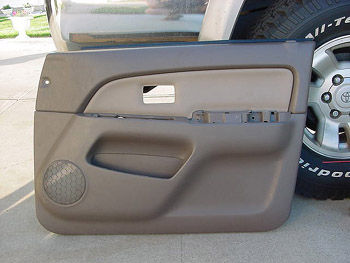![[Metroactive Features]](/features/gifs/feat468.gif)
[ Features Index | Santa Cruz Week | SantaCruz Home | Archives ]
Biotextiles
It's crazy to waste our dwindling, nonrenewable resources on stupid things like dashboards and door panels
By Novella Carpenter
The Graduate is being shown at the movie theater down the street from my house. Although Paul Simon and Art Garfunkel's soundtrack is atrocious, just atrocious, it's still one of my favorite movies. The best scene in my book is when Ben, our lost protagonist, gets that infamous career advice: "I just want to say one word to you, just one word."
"Yes, sir."
"Are you listening?"
"Yes, sir. I am."
"Plastics."
Today, if I were to hand out some sage advice to Ben, I'd have one word: "biotextiles." Biotextiles, also called bioplastics or ecoplastics, are plant-based, renewable composites made from crops that include, but are not limited to, kenaf, elephant grass and, of course, hemp. A guy in my horticulture class mentioned kenaf to me once, but I didn't revisit biotextiles until I attended a panel discussion titled "The End of Oil." One of the panelists was a former Shell executive now gone green, and she urged people to look into biotextiles. She cared because plastic is a petroleum product. And with a major shortage of oil on the horizon, it's crazy to waste our dwindling, nonrenewable resources on stupid things like dashboards and door panels, don't you think?
Enter biotextiles. Toyota claims it is leading the development of environmentally friendly materials with the creation of an ecoplastic made out of a combination of kenaf fibers and polylactic acid derived from sugar cane and sweet potatoes. It is heated and then extruded like petroplastic and is used in the Toyota Raum's spare tire cover and part of the floor mats. Toyota's website even features a model of the carbon cycle to show how using these plant-based materials actually removes carbon dioxide from the atmosphere and doesn't use nonrenewable resources. Mercedes, too, introduced kenaf for sound dampening in the doors of some of its 1999 models.
Not everyone is on the bandwagon. During an interview with ABC, Phil Colley, a Ford spokesman, was quoted saying, "We use natural fibers only when it makes sense technologically." So far that means only in the interior of their hoods to dampen sound.
Another impetus for using biotextiles is the ever-growing landfills. In the future, manufacturers and consumers will be financially responsible for disposing of their cars. Although much of a car can be salvaged, things like plastics, foams, glass and rubber can't, and into the landfill they go. One solution will be cars made out of biodegradable materials. A fiber scientist at Cornell, Anil Netravali, is a proponent of using these green composites. The natural fibers are mixed into a matrix of plant-based or other resins that can be molded into interior, and eventually exterior, paneling. Once the car comes to the end of its life, the biodegradable parts could be tossed in the compost pile!
Let me introduce you to a few of our biotextiles friends:
Kenaf (Hibiscus cannabinus), a relative of okra and cotton, grows to 12 to 15 feet in just four months. Usually used for low-grade paper and particleboard, it can be used in cars as an insulation against road noise. Kenaf has pores that serve as a natural trap for sound.
Hemp (Cannabis sativa) fibers have higher strength-to-weight ratios than steel and are much cheaper to manufacture. The hemp used in car making contains only a whisper of tetrahydrocannabinol (THC), the chemical that makes you stoned out of your mind. Another downside is that hemp can produce a musty odor when incorporated into a vehicle.
Elephant Grass (Miscanthus sp.) is a hardy perennial grass that grows to 10 feet and requires no pesticides or fertilizers (which are also petroleum products). Short pieces of elephant grass are added to biodegradable plastics in order to strengthen them. It can be used for other purposes, like compressed fuel briquettes, candles and even soaps.
Copyright © Metro Publishing Inc. Maintained by Boulevards New Media.
For more information about Santa Cruz, visit santacruz.com.
![]()

Rev
Novella wants to form a Future Fiber Farmers of America branch. Email her at [email protected]—we'll make a fortune!
From the June 2-9, 2004 issue of Metro Santa Cruz.